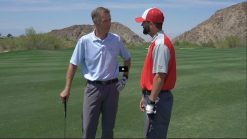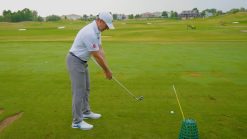Matt Henderson: Generate More Spin on Wedges
Matt Henderson discusses how to generate more spin on wedges in golf. Many golfers believe that hitting down on the ball is necessary to create spin. However, this often leads to dragging the loft along with the swing, resulting in compensations and trouble. Instead, the key to generating spin is creating friction between the ball and the clubface.
To understand how to control friction and spin, Henderson introduces the concept of the clubhead’s radius. He explains that the clubhead moves within a “blue hula hoop” representing its radius. The bottom of the divot marks the low point of this radius. To achieve good wedge play, it is important to manage the relationship between the loft of the club and the radius.







